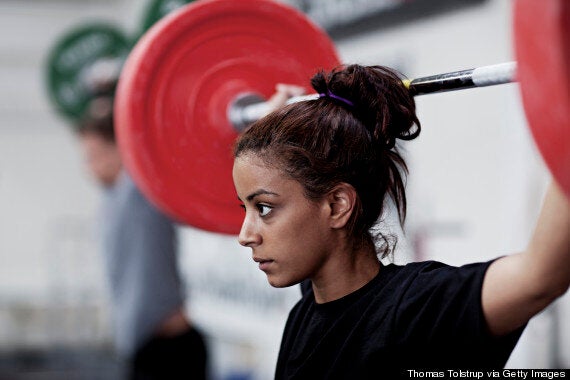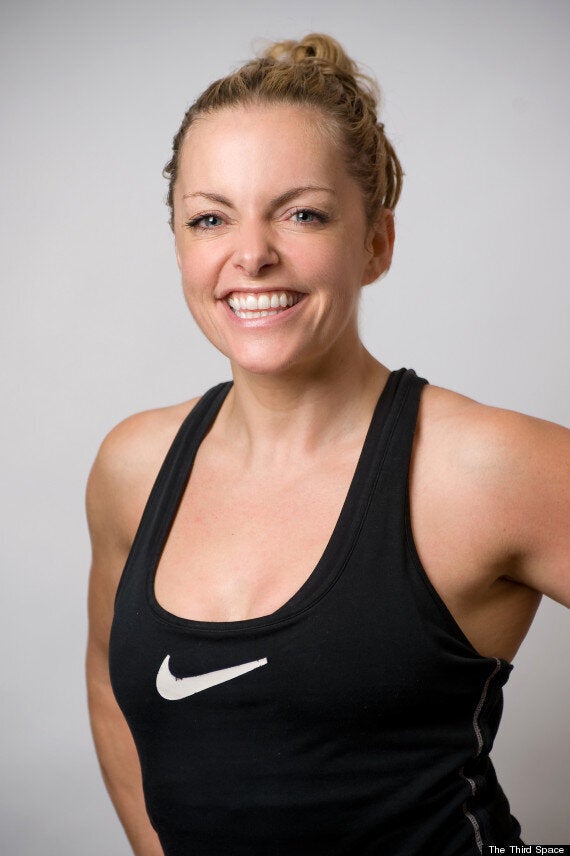If I had a penny for every time a woman said to me “I don’t want to lift bigger weights because I don’t want big muscles”, I’d have…well, probably around £2, but you get the point. That’s a lot of women.
The preconception that lifting big weights gives you Arnie arms is mainly psychological: we just don’t have enough testosterone to do so, and if it was that easy, bodybuilders wouldn’t have such a meticulous, gruelling training schedule.
I was inspired to try strength training – that’s learning to lift bigger weights, with low repetitions – after I saw a woman the size of a bird squatting with a huge barbell. It looked impossible but clearly it wasn’t, and she looked strong, fit, toned and above all: inspirational.

A lot of women prefer to stick to cardio because it burns lots of calories. But the fact is that strength training helps to burn calories long after you've finished your workout.
A study in The Journal of Strength and Conditioning Research, reported Women's Health, found that women who completed an hour-long strength-training workout burned an average of 100 more calories in the 24 hours afterward than they did when they hadn't lifted weights.
But the thing with strength training is that you have to know what you’re doing. This is one time when you really want to hire a personal trainer – even for a few sessions rather than relying on a mate to show you.
I asked Cathy Brown, the ex-professional boxer (she used to fight for Britain), who also does strength training at The Third Space gym (easily one of the lushest gyms I’ve visited).
Our first session begins with the basics. In strength training, it’s all about technique.
Sometimes it gets a bad rep because people ask whether it’s going to create injuries – that will only happen if you’re taught by someone who doesn’t 100% know what they’re doing. When you’re starting out, you need to be meticulous if you’re going to create the right body shape and do it in such a way that you protect your knees and your back.

Cathy Brown
Having now been through a session of strength training, it is daunting how much you need to remember and learn.
We start first with squats. Cathy shows me how to properly do a squat – and while I’m thinking ‘well, I definitely know how to do a squat’, I find out that I haven’t been doing squats right at all.
First your bum needs to go a lot lower than you think it does – literally hovering off the ground. If you persistently squat with your knees at a 90 degree angle, you’re putting them under a lot of strain – taking them a few inches lower is actually kinder to them (and works your glutes and core a lot more efficiently).
SEE ALSO:
The Lilly Ann Workout - Dad Does Adorable Exercise Routine Inspired By His Baby Daughter
Teen Bodybuilder Consumes 5000 Calories A Day, Beats Men Twice His Age
I start off lifting 5kg and then work my way up to 25kg. I learn the correct stance to begin with – you stand with the barbell resting on your shoulders and on the hooks, then you push off, and step back with it resting on your shoulders. I try a few experimental squats – it’s a lot harder than it looks.
There’s a great temptation to push your chest forward, or for your feet to start knocking or inch themselves off-balance so they are pointing outwards. Both will place a strain on your knees and back, so the trick is to engage your core, keep your chest straight and knees forward.
Strength training is actually really good for preventing osteoporosis because it builds stronger bones, and for women this is really important because once you hit menopause, your hormones make it a lot more likely that you’ll develop the condition.
After working out the legs, we do a super set, which balances the set of leg exercises with some chest exercises. This is the weighted chest press and it’s best done if you can get someone to spot you (it will become apparent when you’re moving up in weight and your arms start shaking like leaves).
When I start to wobble on the bench press, Cathy shares a secret.
“Visualisation,” she says, “really helps when it comes to strength training. Picture the muscle you’re working out and look straight ahead, don’t let your attention waver even for a second, and push everything you can into it.”
This isn’t some Mr Miyagi nebulous advice either – when I eventually increase up to 30kg and am about to wobble, I push through with – I think – Cathy’s help. She then tells me that actually, she didn’t touch the bar, it just looked like she was.
We do five alternating sets of each, with a very small number of reps – around 3 – 4 at the most.
The next two exercises are deadlift and lat pull down. I’ve done variations of these exercises before but not at this weight. I practice the deadlift with a training bar – again, to get my posture just right.
The feet are straight, hip-width apart, and the crucial thing here is the back. I pinch my shoulder blades together, squat and pick up the barbell, straighten my arms and squat back down. We do 4 reps of each and build up to 45kg.
Another must is that you have to keep your tummy as tight as possible. So although it may feel like you’re just working out your legs or your arms, you’re actually giving your entire body a workout.
When I finish, I don’t feel that gasping exhaustion that I normally do with a personal trainer. But it’s only after we finish core exercises and plank, I realise that I’m actually bloody knackered – where I feel it most is in the wobble of my knees.
But despite feeling exhausted, I walk out of there feeling like I have a cape fluttering behind me, with a Superwoman insignia blazing on my back. Apart from boxing, in the all the years I’ve exercised, I have never felt anything quite so empowering as strength training.